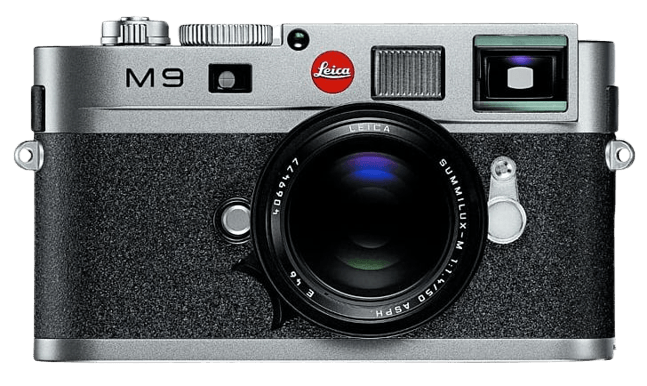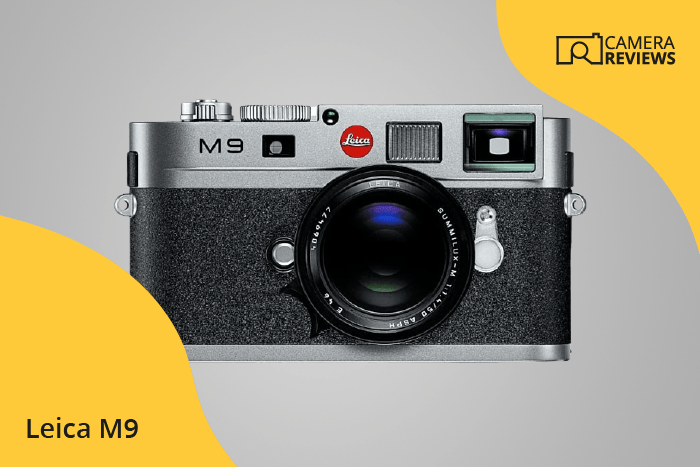Leica M9 Specs and Scores

The Leica M9 receives a score of 34/100 for its general specifications. Announced on September 9, 2009, this mirrorless camera was launched at a hefty price of $5,500. The camera measures 139 x 80 x 37mm and weighs 585g or 1.29lbs. Although the Leica M9 offers a compact and lightweight design, its specifications may not hold up to the competition in today’s market, especially considering the advancements in camera technology since its release.
Leica M9 Overview and Optics
The Leica M9’s optics score is 42/100. With 18 megapixels, a shooting speed of 2, and a CCD sensor, this camera features a Maestro II processor. The DXOMARK score for the sensor is 69, and the camera has a full-frame sensor size. The lens mount is Leica M, and there is no image stabilization. The aspect ratio is 3:2.
In the current market, the Leica M9’s specifications may not be as competitive as newer models. Its 18-megapixel resolution is lower than many modern cameras, and the shooting speed of 2 is not ideal for fast-paced photography. The lack of image stabilization also limits its versatility in various shooting conditions.
The Leica M9 remains a classic camera with a strong reputation, but its optics may not be the best choice for those seeking cutting-edge technology and features.
Leica M9 Video Performance
The Leica M9 lacks video functionality. Unlike other cameras, it does not record video.
Leica M9 Features and Benefits
The Leica M9 receives a feature score of 17/100. This score results from a combination of various specifications, including a 2.5-inch screen size and a screen resolution of 230,000 dots. The camera lacks modern features such as a touchscreen, flip screen, GPS, WIFI, and Bluetooth.
In today’s market, the Leica M9’s specifications fall short compared to other cameras. The small screen size and low resolution hinder the user experience. The absence of a touchscreen, flip screen, and wireless connectivity options limits the camera’s versatility and convenience for photographers.
Despite its high-quality optics and video capabilities, the Leica M9’s outdated features make it a less competitive option for photographers seeking advanced functionality and convenience. The low feature score reflects these limitations.
Leica M9 Storage and Battery
The Leica M9 receives a storage and battery score of 21/100. This camera has one memory card slot, accepting SD and SDHC cards. In today’s market, this might not be sufficient for users who require more storage capacity or the convenience of switching between multiple cards. The battery life of the M9 lasts for 350 shots, powered by a BP-SCL1 battery. USB charging is not available, which can be a disadvantage for those who prefer convenient charging options.
Considering these specifications, the Leica M9’s storage and battery performance falls short compared to modern cameras. Users may find it less convenient and practical due to its limited storage options and charging capabilities.
Leica M9 Alternatives
Do you want to know how the Leica M9 compares to its competitors? Have a look at the most popular comparisons for this camera below:
- Canon EOS 5D Mark IV vs Leica M9
- Fujifilm X-T5 vs Leica M9
- Leica M Typ 240 vs M9
- Leica M9 vs Nikon D850
- Canon EOS R5 vs Leica M9
- Fujifilm GFX 50S II vs Leica M9
Leica M9 FAQ
Does the Leica M9 Have Built-in Image Stabilization?
The Leica M9 does not have built-in image stabilization. Users will need to rely on steady hands or use a tripod for stable shots.
Does the Leica M9 Support 4K Video Recording?
The Leica M9 does not support 4K video recording, as it does not have any video functionality at all. It is primarily designed for still photography.
What Size Sensor Does The Leica M9 Have?
The Leica M9 features a full-frame sensor, which is 36x24mm in size. This larger sensor allows for better image quality and low-light performance.
Does the Leica M9 Have a Dual Memory Card Slot?
The Leica M9 does not have a dual memory card slot. It has a single SD card slot for storage of images and data.
Does the Leica M9 Have a Touch Screen?
The Leica M9 does not have a touch screen. Users will need to navigate the camera’s menus and settings using physical buttons and dials.
Does the Leica M9 Have Wi-Fi and Bluetooth?
The Leica M9 does not have built-in Wi-Fi or Bluetooth capabilities. Users will need to transfer images using a card reader or USB connection.
Does the Leica M9 Have GPS?
The Leica M9 does not have built-in GPS functionality. Users who want to geotag their images will need to use an external GPS device.
Is the Leica M9 Weather Sealed?
The Leica M9 is not weather sealed. Users should exercise caution when using the camera in wet or dusty environments, as it is not designed to withstand harsh conditions.
Does the Leica M9 Have a Built-in Flash?
The Leica M9 does not have a built-in flash. Users will need to attach an external flash to the camera’s hot shoe for flash photography.

